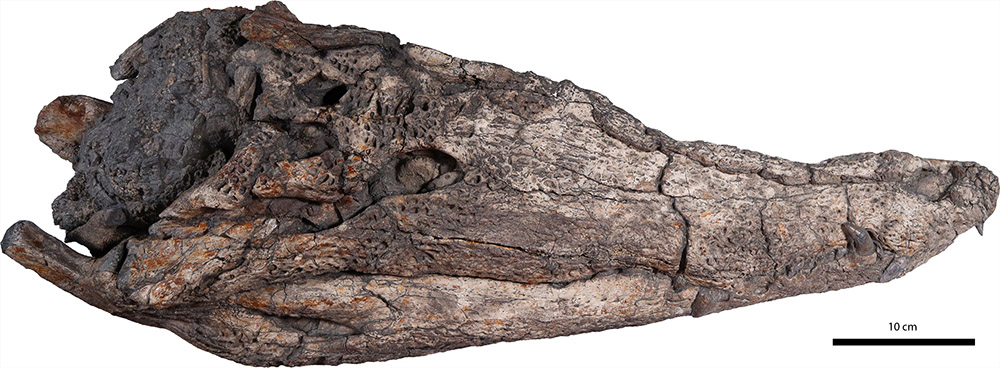Researchers from the Senckenberg Centre for Human Evolution and Palaeoenvironment at the University of Tübingen have identified fossils of a previously unknown crocodile species in Vietnam. The nearly four-meter-long, almost completely preserved skeleton from the Na Duong site is part of the group of long-snouted crocodiles from the gharial family. The fossil, which is between 35 and 39 million years old, provides new information about the spread of these crocodiles from their origins in North Africa and Western Europe to Southeast Asia. The study has been published in the Journal of Systematic Palaeontology.
Gharials have a long snout and specialize in catching fish. The representatives of this family living today are endangered: the false gharial (Tomistoma schlegelii) in the Malay Peninsula, Borneo, Sumatra and Java as well as the gharial (Gavialis gangeticus) in Nepal and India. The exact relationship between these present-day crocodile species has not yet been conclusively clarified, despite genetic studies.
Contact for press:
Eberhard Karls Universität Tübingen
Public Relations Department
Dr. Karl Guido Rijkhoek
Director
Janna Eberhardt
Research Reporter
Fax +49 7071 29-5566
janna.eberhardtspam [email protected]
All press releases by the University of Tübingen







